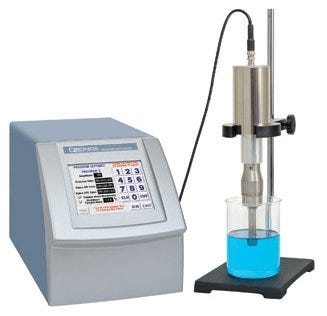
Energy comes in many forms. One of those is sound energy, which manifests as vibration. For example, we can hear a loud noise because receptor cells in our ears translate vibrations from sound energy into brain-bound electrical signals. Most sound waves lie outside our range of “hearing,” but produce energy nonetheless. In labs, this ultrasonic energy is used to agitate particles for the purpose of cleaning, mixing solutions, increasing dissolution rate, or to evaporate dissolved gasses from liquids.
Sound travels through air, liquids and solids. The less dense the medium, and the closer the source, the easier the sound waves move. Sound “frequency” is a measure of particle vibration: higher frequencies cause more vibration, and as you can imagine, carry greater strength. Sonicators used in labs are high-frequency instruments that operate at levels above what humans can hear. These ultrasonic waves are above 20 kHz, which is 20,000 cycles per second.
In a solution, particles vibrate because they experience continuous cycles of high and low pressure as sound waves pass through them. As this occurs, microscopic vacuum bubbles (voids filled with air) form and then collapse into a solution; a process called cavitation. Some forms of cavitation are undesirable as they result in damaging wear-and-tear over time. However, in a lab environment, these bursting bubbles are beneficial for mixing and cleaning applications.
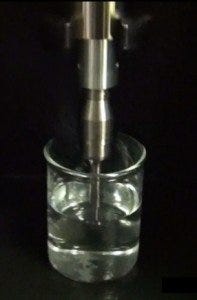
Probe in sample, delivering ultrasonic vibration (Q700 from QSonica)
Sonicator Application Overview
- Replaces stirring (which is not always practical); sonication increases dissolution rate by breaking molecular bonds
- Provides the energy to catalyze certain chemical reactions
- Disrupts or inactivates materials in biological experiments (i.e., increasing permeability by disrupting cell membranes in a process called sonoporation). This technique is used for procedures such as enhanced drug delivery
- Removes gases from liquids (aka degassing) by agitating the medium as it’s contained in a vacuum. Unlike “sparging” (gas flushing), sonication doesn’t require a source of inert gas
- Evenly disperses nanoparticles in liquids
- Triggers crystallization processes and helps in anti-solvent precipitations by promoting mixing and isolation of small crystals
- Cleans instruments and materials by loosening particles from surfaces (breaks adhesion bonds)
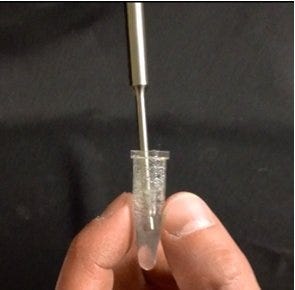
Q55 sonicator probe is designed for smaller samples
How does a Sonicator work?
A sonicator is made up of three major components: generator, converter and probe (or horn). Like falling dominos, they create a chain-reaction to deliver ultrasonic energy for the desired result. The generator provides power, in the form of electronic pulses, to the sonicator. The converter transforms these pulses into mechanical vibrations, fed into the probe which rests in the sample medium. The probe allows location targeting for exacting results.
Different Types of Sonicators
There are many different types of sonicators available, but the Q700 from Qsonica is one of the most technologically advanced model on the market. Its power output (up to 700 watts), translates into a durable instrument that can handle small or large samples. It has a user-friendly touch-screen interface that makes programming and operation easy to manage. Efficient internal circuitry is designed to provide reliable results and sample-to-sample consistency.
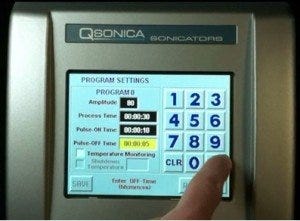
Q700 Sonicator touchscreen interface
The Q700 is the only sonicator design that provides a full range of amplitude control (1-100%), leading to a higher-level of control and more precise delivery of mechanical vibrations. Sample processing, oftentimes the most time-consuming step in your experiments, can be performed with control and efficiency.
The Q55, also by Qsonica, is ideal for small-volume samples, and the compact footprint makes it popular with busy labs. It runs on 55 watts, performing cell disruptions, emulsions and homogenization operations with ease.
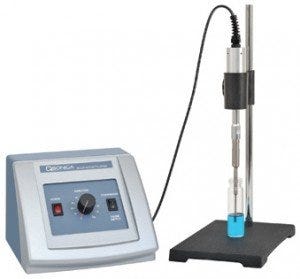
Q55 Sonicator from QSonica
Summary
Sound energy in laboratory and industrial applications allows “no-touch” manipulation of samples and materials, and achieves results that other processes cannot. Many unique uses have arisen from this concentrated application of energy. Today’s labs consider sonicators standard, necessary equipment.
Find out more about Terra’s sonicators.
No comments:
Post a Comment